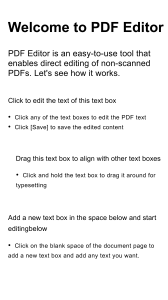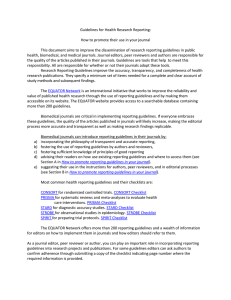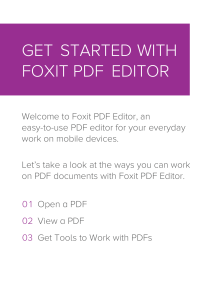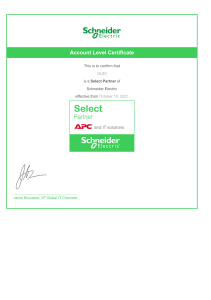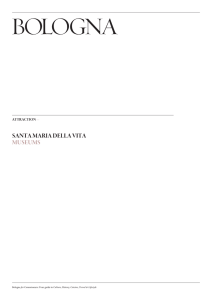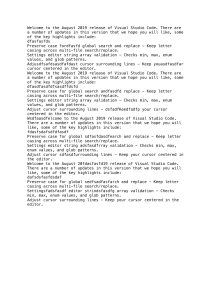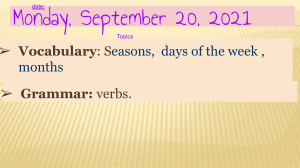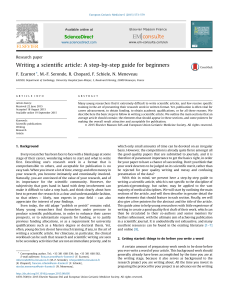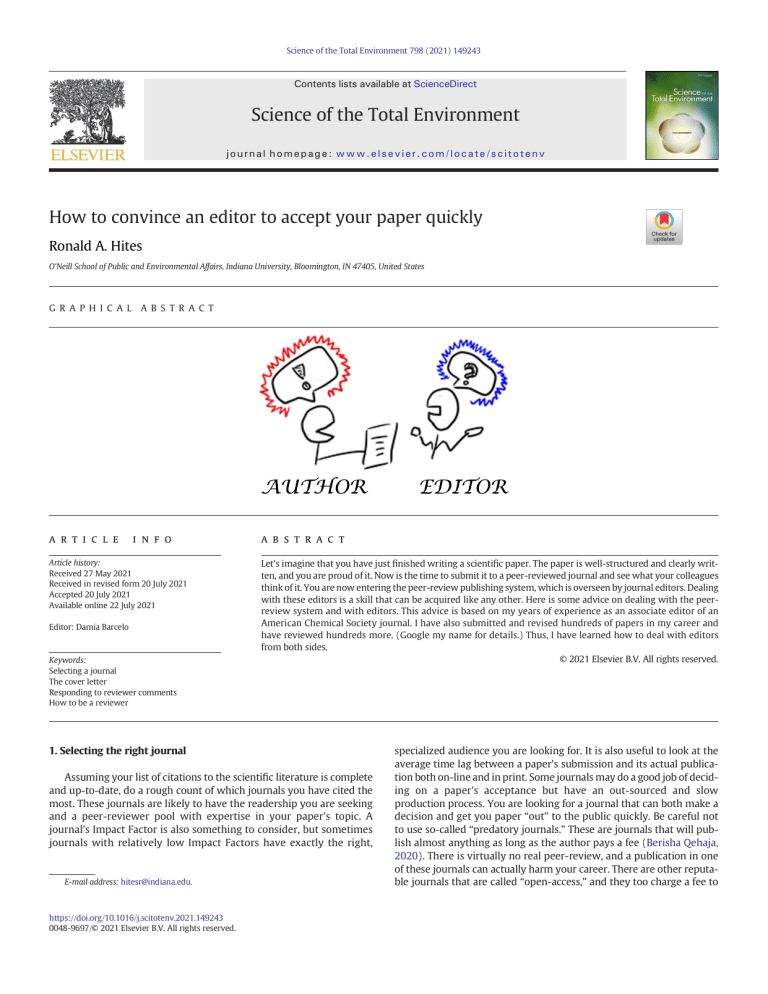
Science of the Total Environment 798 (2021) 149243 Contents lists available at ScienceDirect Science of the Total Environment journal homepage: www.elsevier.com/locate/scitotenv How to convince an editor to accept your paper quickly Ronald A. Hites O'Neill School of Public and Environmental Affairs, Indiana University, Bloomington, IN 47405, United States G R A P H I C A L a r t i c l e A B S T R A C T i n f o Article history: Received 27 May 2021 Received in revised form 20 July 2021 Accepted 20 July 2021 Available online 22 July 2021 Editor: Damia Barcelo Keywords: Selecting a journal The cover letter Responding to reviewer comments How to be a reviewer a b s t r a c t Let's imagine that you have just finished writing a scientific paper. The paper is well-structured and clearly written, and you are proud of it. Now is the time to submit it to a peer-reviewed journal and see what your colleagues think of it. You are now entering the peer-review publishing system, which is overseen by journal editors. Dealing with these editors is a skill that can be acquired like any other. Here is some advice on dealing with the peerreview system and with editors. This advice is based on my years of experience as an associate editor of an American Chemical Society journal. I have also submitted and revised hundreds of papers in my career and have reviewed hundreds more. (Google my name for details.) Thus, I have learned how to deal with editors from both sides. © 2021 Elsevier B.V. All rights reserved. 1. Selecting the right journal Assuming your list of citations to the scientific literature is complete and up-to-date, do a rough count of which journals you have cited the most. These journals are likely to have the readership you are seeking and a peer-reviewer pool with expertise in your paper's topic. A journal's Impact Factor is also something to consider, but sometimes journals with relatively low Impact Factors have exactly the right, E-mail address: [email protected]. https://doi.org/10.1016/j.scitotenv.2021.149243 0048-9697/© 2021 Elsevier B.V. All rights reserved. specialized audience you are looking for. It is also useful to look at the average time lag between a paper's submission and its actual publication both on-line and in print. Some journals may do a good job of deciding on a paper's acceptance but have an out-sourced and slow production process. You are looking for a journal that can both make a decision and get you paper “out” to the public quickly. Be careful not to use so-called “predatory journals.” These are journals that will publish almost anything as long as the author pays a fee (Berisha Qehaja, 2020). There is virtually no real peer-review, and a publication in one of these journals can actually harm your career. There are other reputable journals that are called “open-access,” and they too charge a fee to R.A. Hites Science of the Total Environment 798 (2021) 149243 your response, then re-read the version of the paper that you actually submitted. If appropriate, delegate parts of the response to one or more of the co-authors. There are several possible outcomes from the editor depending on the journal. These outcomes cover the spectrum (see Fig. 1) from “accepted as is” (this almost never happens) to “rejected and never darken our door again.” In some cases, these “closed door rejections encourage you to submit your manuscript elsewhere; other times, the editor mails you a personal shredder for destroying all known copies of the manuscript. If the door is closed, don't antagonize the editor by resubmitting the manuscript”(Silvia, 2007). The editor's letter will explain the level of revision they are expecting. Look for the word “minor.” In this case, assuming you can respond satisfactorily to the reviewers comments, the paper will be accepted without further external review. You and your co-authors should celebrate and make the revisions within 1–2 weeks. In the absence of the word “minor,” the editor may tell you that “major” revisions are needed and give you a deadline for getting your revised manuscript resubmitted. Don't miss this deadline. It is not always obvious if the editor plans to send your paper out for more peer-review or will just make the decision on his or her own. What the editor does with your paper at this point depends to a large extent on how convincing your response letter is (see below). If your paper goes out for more peer-review, the final result may depend on whether the same reviewers agree to read your paper again, which is unlikely. Sometimes your paper will be rejected, although many journals use softer words. One type of rejection is the so-called “reject and resubmit” decision, which some journals use extensively. This means there is still hope, and it is likely the editor is on your side. Again do not miss the deadline for resubmission, and be sure to respond to all of the reviewers' comments. If at least two reviewers say “reject,” try another journal or reconsider the heart of the paper. Perhaps, the paper is outside of your area of expertise or outside the scope of the journal. Everyone gets rejected, so get over it and move along with your career. publish your paper. The difference is that these high quality, open access journals do a vigorous peer-review before asking for your money. In general, if you have been solicited to submit a paper by spam e-mail, it is a predatory journal. 2. General advice regardless of the journal you select Once you have selected a journal, read and follow the directions as given in each journal's “Guidelines for Authors.” Following these guidelines demonstrates that you are a professional and can read and follow directions, and you will surprise and impress the editor. In some cases, length limits may be important, but even if there are no length limits, make the paper as short as possible. Always keep all your co-authors in the loop when you submit the paper. Unlike a book editor, do not expect a journal's editor to actually edit your paper before it goes out for peer-review. 3. The cover letter Do not leave this to the last minute. The cover letter tells the editor who the corresponding author is. Some journals also want you to include a paragraph (a synopsis) about what your paper is about and why it is novel, but do not repeat the title. The cover letter is also the place for you to suggest potential reviewers of your paper. You should list four or more possible reviewers; indeed, most journals now insist that you list several potential reviewers and their affiliations. Suggested reviewers with non-institutional e-mail addresses are unlikely to be used. Do not just list your friends, and do not “salt” the reviewer pool by sending advance copies of your paper to people who you hope to have as reviewers. Editors almost always use people from your list, so be careful whom you suggest. In fact, it has been shown that suggesting reviewers can help your manuscript get published (Grimm, 2005). Occasionally, you may want to suggest a reviewer (or an associate editor) to avoid but be careful with these vetoes. 6. Appealing an editor's decision 4. Pre-decision timing If you are going to appeal a decision to reject a paper, you need to do all the revisions and generate a reviewer response document (see below) to go along with your appeal. A bad reason for appealing a rejection is, “You published one just like it a year ago.” In my experience as an author and as an editor, appeals rarely work (unless you have some legal or ethical problem with an editor). At some point, you need to reconsider both the journal you have selected and the paper's content. Be patient. If you have not heard from the associate editor in 2–3 months, a tactful inquiry about the manuscript's status is appropriate, but try not to make this “editor poking” a habit. In general, expect rejection. Most journals now reject about half of the manuscripts they receive, so at best, your odds are even. On the other hand, do not let your fear of rejection paralyze you. Remember, a paper cannot be accepted if it has not been submitted. Even if it is rejected, you will usually get reviewer comments that make it a better paper and make you a better scientist. Unfortunately, many journals are now rejecting papers “without external review.” Generally, this sort of draconian rejection (often without explanation) only happens for the most selective journals, but it is fast. 7. Responding to the reviewers' comments The response document is very important even if few people will read it, and it can get quite long. You should include and answer all the reviewers' comments point-by-point no matter how irrelevant or wrong-headed. Remember, if a reviewer says something is not clear, it is your fault not theirs. The point is to think clearly about the reviewers' comments and what you have written. Writing this response document is slow and nit-picking work in which you are editing two or three linked documents simultaneously, but that is no excuse for missing the deadline. 5. When you hear from the editor Immediately copy the editor's letter to all your co-authors. Read the entire letter, including all of the reviewers' comments and the editor's explanations (if any). Calm down, and wait a few days before starting Fig. 1. The spectrum of responses that you might get back from an editor after peer-review of your manuscript. 2 R.A. Hites Science of the Total Environment 798 (2021) 149243 most mid-career scientists should probably be doing about 5 reviews per year. When an editor selects you as a potential reviewer for a given paper, the journal's computer will send you a message with this request, and it will include the journal's name, the paper's title, and its abstract. After looking at this information, decide if you want to do the review by the given deadline. The editor's message will include a link to select if you agree to do the review and another link to select if you do not want to do the review. Do not sit on this journal's request because you think you might be able to do the review later or because you think the topic is interesting. Dithering at this point in the process slows up the entire system and irritates the editor. Thus, respond immediately with “yes” or “no.” If you do not want to do the review, it is useful to suggest other suitable reviewers. If you are just starting your scientific career, have a chat with your mentor about how to review papers. There are also a couple of papers on the subject in the biomedical literature (Dhillon, 2021; Kotsis and Chung, 2014). If you would like to be a peer-reviewer for a given journal, ask the editor to add you to that journal's reviewer pool. This is almost always welcome. If you are well established in your scientific career, do not be a slow or reluctant reviewer on the one hand, and an impatient author on the other. In general, when asked to review a paper, try hard to agree and to meet the deadline. Include all the comments from all the reviewers in one unified response document so that the next set of reviewers has all the information in one place. If the reviewers disagree on some issue, you can point this out, but fix the problem as well. Be careful not to respond to a reviewer's question without also inserting the answer into the manuscript. If you disagree with a reviewer's suggestion, explain why you have not made that change. If possible, it is better to compromise than to argue, but stand your ground when warranted. Most journals decide on the acceptability of your revision in 1–2 weeks, but that can increase to 1–2 months if the paper is sent out for re-review. Do not count on the reviewers of your revision being the same as the reviewers of your original submission, so explain everything in your response document. This sometimes generates a whole new set of suggested revisions to which you need to respond. 8. Post-decision timing Moving your paper through the system quickly is everyone's goal. The editors do this by holding the reviewers to a deadline and cutting them off if they do not deliver on time. The authors can promote speedy publication by meeting (or exceeding) deadlines when they are asked for revisions of their manuscript. It is surprising how often delays in getting a manuscript in print are the result of the authors' tardiness, not the reviewers'. If everything works, you will get page proofs, which show you what the paper will look like in print. Immediately, send copies to all your coauthors, and ask for their corrections, which you will consolidate. Pay a lot of attention to the page proofs, requesting an extension of the deadline if needed. This is your last chance to revise the paper, so do not be shy in making changes. Ask for a second proof if your revisions are extensive. Declaration of competing interest The author declares no competing financial interests. References Berisha Qehaja, A., 2020. Avoiding publishing in predatory journals: a evaluation algorithm. J. Efficiency Responsib. Educ. Sci. 13, 154–163. Dhillon, P., 2021. How to be a good peer reviewer of scientific manuscripts. FEBS J. 288, 2750–2756. Grimm, D., 2005. Suggesting or excluding reviewers can help get your paper published. Science 309, 1974. Kotsis, S.V., Chung, K.C., 2014. Manuscript rejection: how to submit a revision and tips on being a good peer reviewer. Plast. Reconstr. Surg. 133, 958–964. Silvia, P.J., 2007. How to Write Lot. APA Life Books, Washington D.C., p. 93. 9. How to be a reviewer The entire peer-reviewed scientific literature system is based on anonymous (and uncompensated) reviewers carefully reading submitted papers and thoughtfully writing cogent reviews of the manuscript. If you use this system, either as an author or as a reader, you have a duty to review papers. How many you do is up to you, but as a rough guideline, 3
